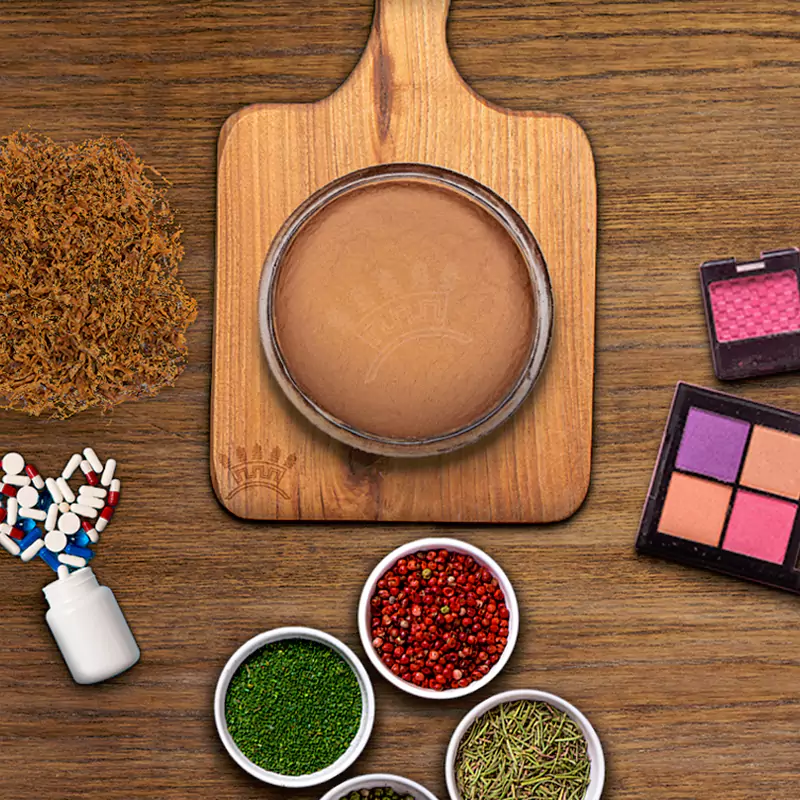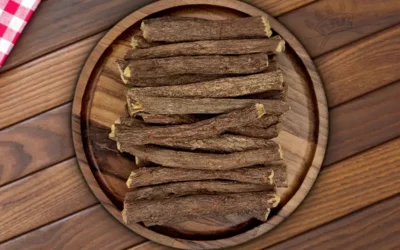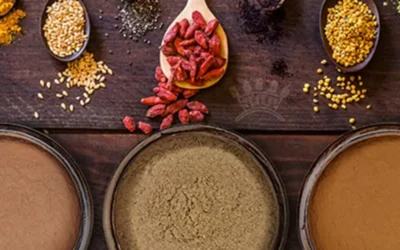Licorice Fields Of Use
Background
Licorice: A Versatile Herb with Wide Applications
Licorice is a perennial herb that has been widely used in cooking and traditional medicine for centuries. Known as a natural sweetener and flavoring agent, licorice offers numerous health benefits. It is an effective remedy for digestive disorders, peptic ulcers, skin diseases, and many other conditions.
The diverse applications of licorice arise from its unique properties, making it valuable in various industries, including tobacco, food and beverages, cosmetics, healthcare, pharmaceuticals, traditional medicine, herbal remedies, confectionery, dietary supplements, chocolate production, and more.
Licorice products are available in a wide range of forms, such as root powder, extract powder, extract paste, granules, nuggets, blocks, and DGL (deglycyrrhizinated licorice).
Sepidan Osareh Jonoob Co.
As one of the world’s leading producers and exporters of licorice products, Sepidan Osareh Jonoob Co. is renowned for its excellence in the licorice market. Several factors contribute to the company’s success, including the production of exceptionally high-quality products, a team of experienced professionals, the use of modern machinery and advanced laboratory equipment, adherence to international quality and management standards, and a commitment to innovation and excellence.
Sepidan Osareh Jonoob Co. has also compiled valuable information on the diverse applications of licorice, showcasing its versatility and importance across multiple industries.
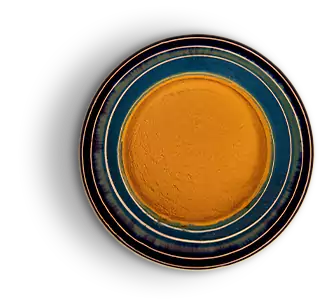
Fields of Licorice Consumption
As previously mentioned, licorice is utilized in various fields due to its unique natural properties. Below, we provide an overview of its key areas of application:
Licorice in the Confectionery and Chocolate Industry
Licorice contains a compound called glycyrrhizin, which is 50 times sweeter than sugar, making it a natural source of sweetness. This substance not only adds sweetness but also imparts a traditional, herbal flavor to products.
In confectionery, where large amounts of sugar and artificial additives are typically used, licorice serves as a healthier alternative, acting as a natural flavoring and sweetener. Its inclusion in cakes, sweets, chocolates, and candies helps reduce reliance on artificial ingredients.
While traditional sugary products can contribute to health issues like obesity and dental problems, licorice offers several health benefits. It has been shown to aid in weight management, support oral and dental health, and provide other therapeutic effects, such as treating stomach disorders, improving fatty liver conditions, and strengthening the immune system.
Licorice candies and chocolates are available in various forms, including jellybeans, twists, tubes, pastilles, and bars. Additionally, licorice can be combined with other flavors, such as strawberry, cherry, or raspberry, to create a wider variety of taste profiles. Interestingly, in some parts of Europe, salty and strong-flavored licorice candies and chocolates are particularly popular, showcasing its versatility in different culinary traditions.
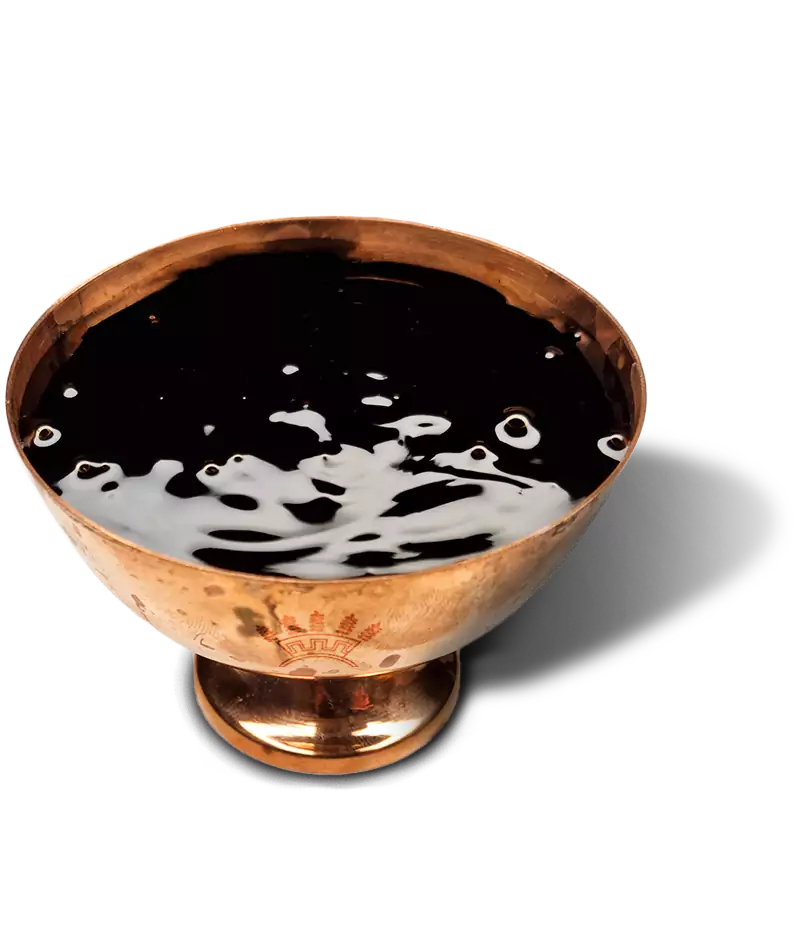
Licorice
Licorice in Cosmetics and Skincare Products
Licorice has become a popular ingredient in cosmetics due to its anti-inflammatory, antibacterial, antiviral, and antioxidant properties. It is widely used in creams, topical gels, and ointments to address various skin issues, including eczema, psoriasis, redness, and other skin conditions. By keeping the skin clean, licorice helps prevent infections and promotes overall skin health.
According to studies conducted by Sepidan Osareh Jonoob Co., licorice extract plays a significant role in controlling skin pigmentation. It prevents the accumulation of pigments that can cause dullness, while its flavonoids help disperse melanin on the skin surface, resulting in a brighter complexion. Rich in antioxidants, licorice also provides anti-aging benefits by promoting collagen regeneration, which helps keep the skin soft, smooth, and youthful. Additionally, it protects the skin from harmful UV rays by enhancing the skin’s natural defense mechanisms.
Beyond skincare, licorice is also used in soaps and shampoos. It helps prevent hair loss, promotes faster hair growth, and repairs damaged or color-treated hair. Licorice is effective in removing dandruff, leaving the scalp clean and healthy.
According to Sepidan Osareh Jonoob Co. studies, licorice extract controls the number of pigments and prevents their accumulation. This accumulation causes dullness on the skin surface. This plant has flavonoids dispersing melanin on the skin surface, which brightens the skin. Licorice extract is rich in antioxidants, so it is anti-aging; it helps regenerate collagen to keep our skin soft and smooth. Licorice protects the skin against UV rays, and this is done by strengthening the skin’s own defense system.
Moreover, licorice is consumed in soap and shampoo. Licorice prevents hair loss and makes our hair grow faster. It is also used to repair damaged and colored hair and to remove dandruff.
Licorice in the Tobacco Industry
The use of licorice in the tobacco industry has gained significant popularity due to its unique properties and benefits. The presence of glycyrrhizin in licorice imparts a pleasant, sweet flavor to tobacco products, enhancing their taste and appeal.
Licorice also plays a crucial role in maintaining the moisture of tobacco, preventing it from drying out. This not only improves the longevity of the product but also provides a smoother experience for consumers. Additionally, licorice helps reduce dryness in the mouth and throat caused by tobacco use, making it more enjoyable for users.
Another notable benefit of licorice is its ability to harmonize and balance flavors in cigarettes and other tobacco products, contributing to a consistent and pleasant taste profile.
Licorice in the Food Industry
Licorice serves as a natural flavoring and sweetener, making it a versatile ingredient in a wide range of food products. These include pastilles, ice cream, jellies, condiments, chewing gum, sauces, herbal teas, syrups, soft drinks, beer, and other alcoholic beverages.
Licorice tea, one of the oldest herbal teas in the world, is particularly valued for its soothing effects on sore throats and its ability to support digestive and respiratory health. Additionally, licorice root is used to flavor dry foods such as sugar, coffee, and salt, as well as being incorporated into spice blends to enhance their aroma and taste.
In the alcoholic beverage industry, licorice is especially popular in stronger drinks, where it imparts a distinctive and robust flavor that enhances the overall profile of the beverage.
Licorice Dosage
Applications in the Pharmaceutical Industry
Licorice, rich in glycyrrhizin and flavonoids, has long been recognized for its therapeutic benefits, particularly in treating digestive issues. It is commonly used to alleviate symptoms of stomach ulcers, pain, heartburn, indigestion, and acid reflux.
In its herbal tea, lozenge, and syrup forms, licorice is widely consumed to soothe sore throats and reduce coughing. Additionally, it offers antiviral properties, helping to protect the body against respiratory viruses.
Licorice also promotes oral and dental health by preventing cavities and tooth decay, thanks to its antibacterial effects against specific oral bacteria.
In the pharmaceutical industry, licorice is utilized in various forms, including:
- Syrups
- Capsules and pills
- Creams, topical gels, and ointments
- Lozenges for sore throat relief
- Toothpastes and other oral care products
A specialized form of licorice, Deglycyrrhizinated Licorice (DGL), is commonly used in this sector. DGL contains reduced levels of glycyrrhizin, making it particularly suitable for individuals with peptic ulcers, diabetes, or high blood pressure.
Licorice in Traditional Medicine and Herbalism
Licorice holds a prominent place in traditional medicine and herbalism, valued for its extensive therapeutic properties. This perennial herb has been used since ancient times as a natural remedy for a wide range of ailments, including stomach disorders, inflammation, peptic ulcers, sore throat, eczema, psoriasis, and other conditions.
The history of licorice usage dates back to ancient Egypt, where it was incorporated into drinks prepared for Pharaohs. In traditional Chinese medicine, licorice has been regarded as a vital herb for enhancing strength, endurance, and overall vitality.
Traditionally, licorice was most commonly consumed as an herbal drink to leverage its medicinal benefits. Additionally, it has been employed in addressing various hair-related issues, further showcasing its versatility in natural healing practices.
Final Note on Licorice Usage
Licorice is generally regarded as a safe food ingredient when consumed in standard amounts. However, certain individuals should exercise caution and consult a healthcare professional before using licorice, including:
- People with diabetes, high blood pressure, liver or kidney problems
- Pregnant or breastfeeding women
- Individuals with a history of stroke or heart attack
Excessive consumption of licorice can lead to several health issues, such as:
- Decreased potassium levels
- Irregular heart rhythms
- Muscle weakness and fatigue
- Elevated blood pressure
- Other potential complications
To ensure safe use, licorice intake should be limited to recommended levels, particularly for individuals in higher-risk groups.
Provided by: Sepidan Osareh Jonoob Co.
Latest Licorice Articles and News
What Is Licorice?
What Is Licorice? Exploring Its History, Uses, and Benefits Licorice (Glycyrrhiza glabra) is a perennial herbal plant known for its naturally sweet flavor, which is up to 50 times sweeter than sugar. Widely used in traditional medicine, licorice has been a...
Types of Licorice Powder
Types of Licorice Powder Licorice powders come in three main types: Licorice Root Powder (used in teas and traditional medicines), Licorice Extract Powder (for cosmetics and pharmaceuticals), and DGL Powder (a safer option for treating digestive issues). These powders...
Uses of Licorice in Cooking
Uses of Licorice in Cooking Licorice has been used for centuries in both cooking and traditional medicine. Known as a natural sweetener and flavoring agent, licorice not only enhances the taste of dishes but also offers numerous health benefits. It serves as an...
